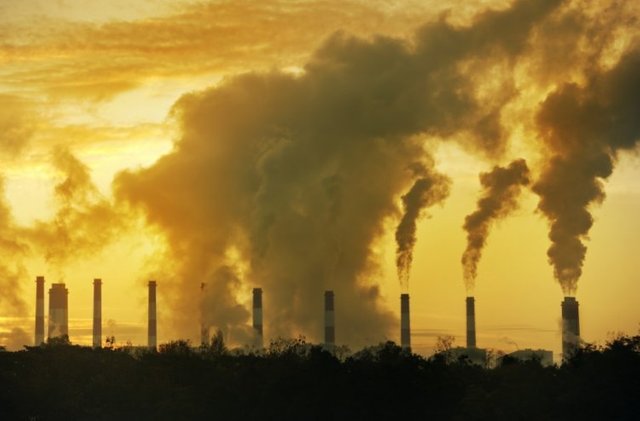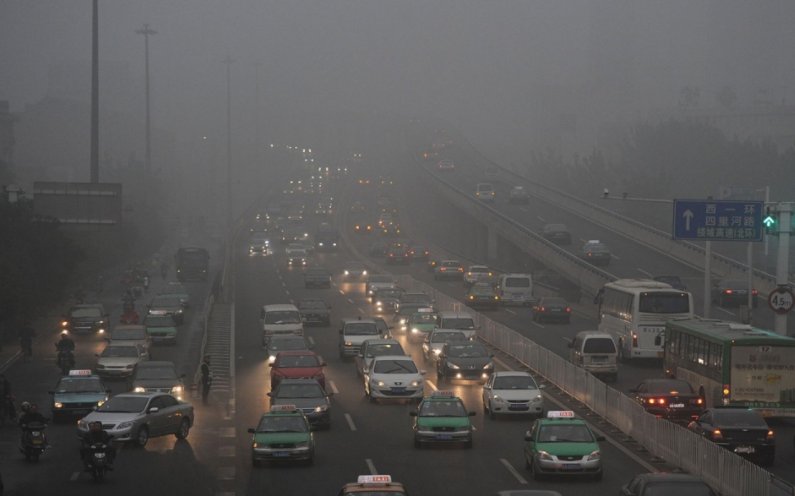Anthropogenic Origins - When Did Climate Destruction Begin?

We have now reached a point where many biophysical indicators have clearly moved beyond the bounds of Holocene variability (Steffen et al., 2015) and humanity can now collectively and historically be considered geological agents, since we have reached numbers and invented technologies that are on a scale large enough to have an impact on the planet itself (Chakrabarty, 2009).
So when did it begin?
When the industrial revolution began producing CO2 and CH4 at rates sufficient to alter their compositions in the atmosphere is one common suggested starting point, among many more the anomalous increase in the CO2 trend 8000 years ago is another (Ruddiman, 2003). So how do we decide which of all possible indicators to use as the starting point for Anthropocene, and for starting and end points in all geological periods? Zalasiewicz et al. (2015) argues basically selecting a boundary is about selecting the optimal, or the least poor range of potential boundary indicators.

The boundary should also represent a single time surface and be at a synchronous level that can be traced all around the Earth (ibid.). The Anthropocene Working Group states the proposed new geological epoch “should reflect a unique stratigraphic unit that is characterized by unambiguous, widespread and essentially permanent anthropogenic signatures in rock, glacial ice or marine sediments” (Zalasiewicz, 2015, p. 436). One aspect of boundaries, which is discussed by Foley et al. (2013), is whether the anthropogenric effect has been on an environmental or climate level. There is abundant evidence of earlier anthropogenic effect on the environment than on the climate, which reiterates the concerns about defining the Anthropocene.
Foley et al. (2013, p.2) argues that it also raises the question of what defines an epoch and states “To some extent this is a thought experiment applied to a time in the far future – the boundary needs to recognizable in the geological record millions of years in the future, just as past boundaries”. I think it is an interesting point, and Wolff, 2014 (cited in: Zalasiewicz et al., 2015) argues that the greatest changes arising from anthropogenic perturbation still lie ahead of us and that we need much longer perspectives in order to assess the human impact. Zalasiewicz et al. (2015) to some extent agree, but they also consider an interim definition of the duration of Anthropocene would be useful, not least for clarity of communication.
References:
Chakrabarty, D. (2009). The Climate of History: Four Theses. Critical Inquiry, 35(2), 197–222
Foley, S. F., Gronenborn, D., Andreae, M. O., Kadereit, J. W., Esper, J., Scholz, D., … Crutzen, P. J. (2013). The Palaeoanthropocene – The beginnings of anthropogenic environmental change. Anthropocene.
Ruddiman, W. F. (2003). The Anthropogenic Greenhouse Era Began Thousands of Years Ago. Climatic Change, 61(3), 261–293.
Steffen, W., Broadgate, W., Deutsch, L., Gaffney, O., & Ludwig, C. (2015). The trajectory of the Anthropocene: The Great Acceleration. The Anthropocene Review
Zalasiewicz, J. (2015). Epochs: Disputed start dates for Anthropocene. Nature, 520(7548), 436–436.
Zalasiewicz, J., Waters, C. N., Williams, M., Barnosky, A. D., Cearreta, A., Crutzen, P., … Oreskes, N. (2015). When did the Anthropocene begin? A mid-twentieth century boundary level is stratigraphically optimal. Quaternary International.